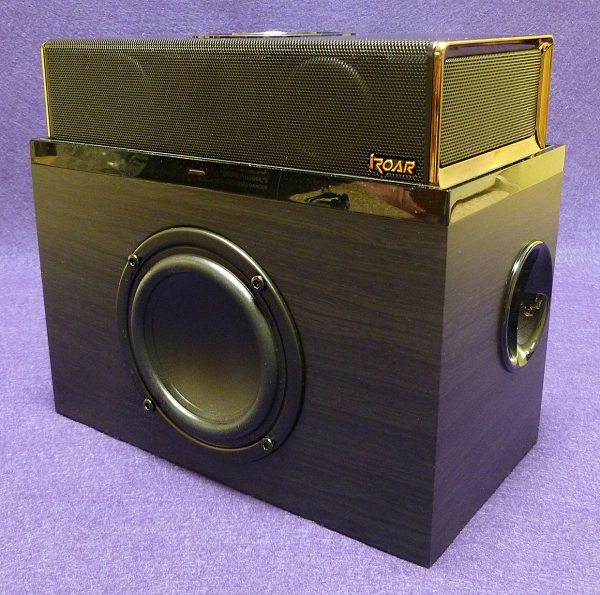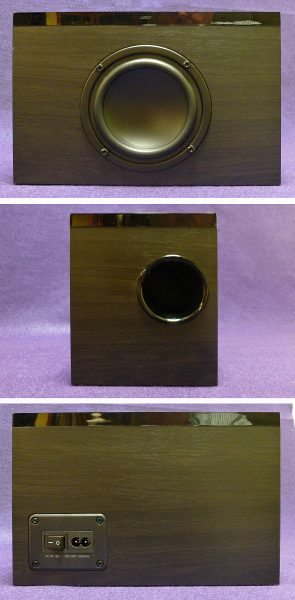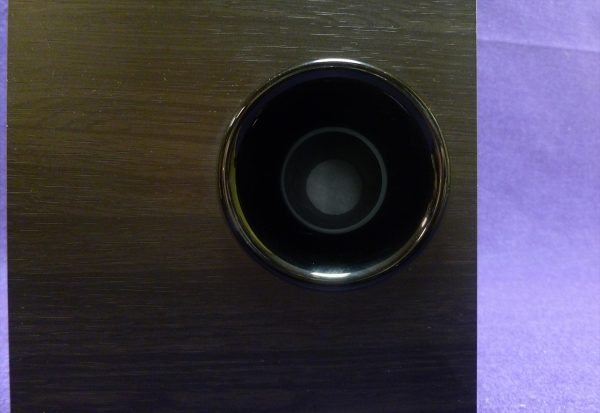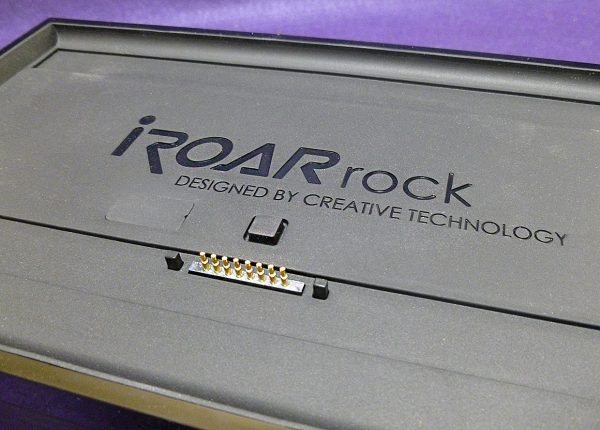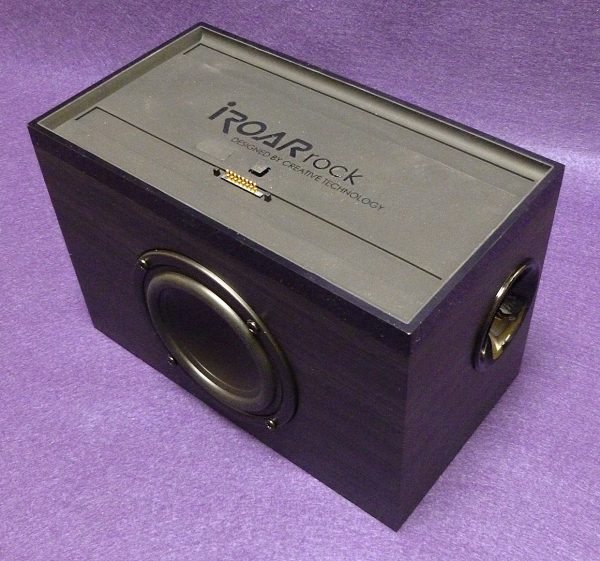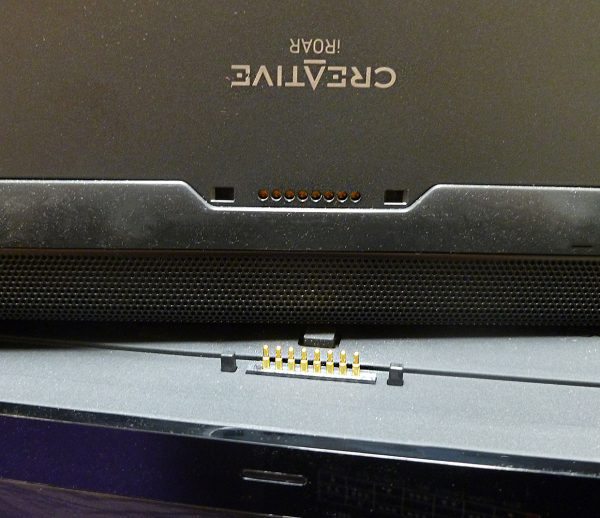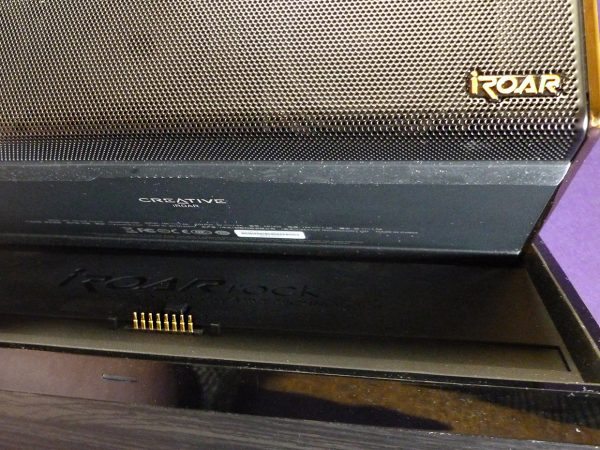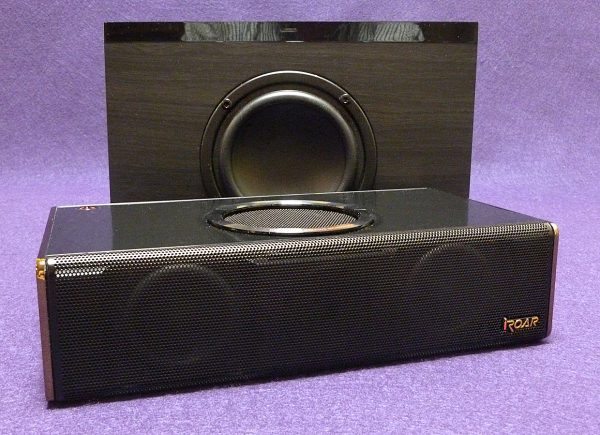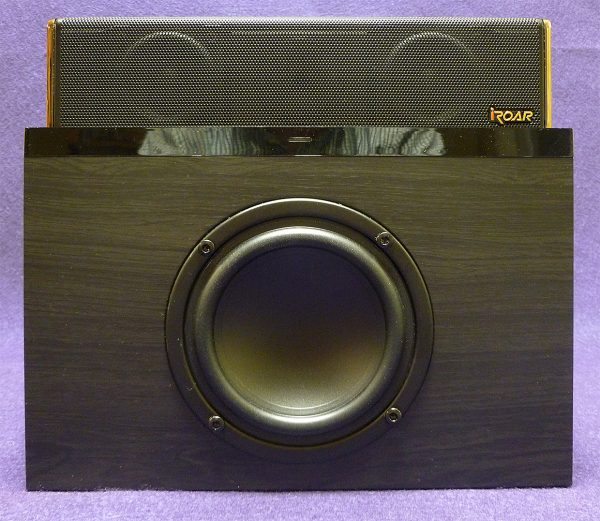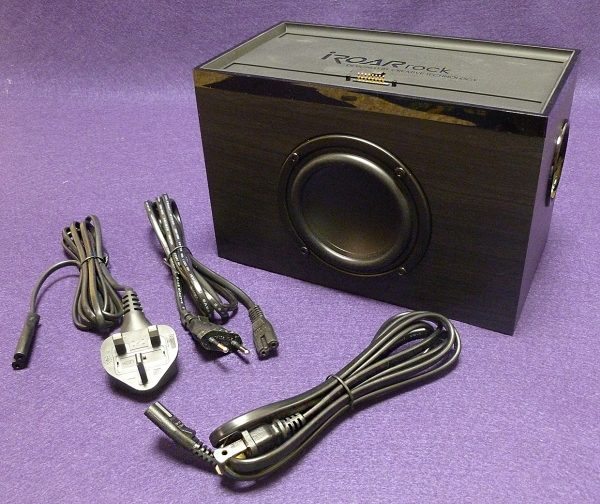
If you’ve owned any of Creative’s Sound Blaster Roar Bluetooth speakers, you know that they put out amazing sound for their size and their price. However, the latest iRoar version is not the bargain the earlier Roar speakers are. It’s use of premium materials and upgraded audio has placed it on another level—right up there with the better portable Bose speakers. And deservedly so—it’s a great speaker. Another asset of the iRoar is its excellent bass. It can easily fill a small to medium sized room with enough low end to keep the beat going. Which is exactly why Creative has come out with a companion subwoofer that only works with the iRoar—the iRoar Rock. I know, if the iRoar is so great, why on earth is there a subwoofer option and is it really needed? The answer is both yes and no. How’s that for a clear answer?
The iRoar Rock is made exclusively for the iRoar. It’s Creative’s way of introducing the iRoar speaker as a hub for future add-ons (such as the iRoar Rock) via the Creative Docking Expansion Port. Who knows what those future accessories might be, but it could be interesting. The expansion port on the iRoar Rock is eight pins that connect to matching slots on the bottom of the iRoar speaker. The top of the iRoar Rock is covered in a non-slip rubber that helps keep the iRoar speaker in place, which fits perfectly into the top of the iRoar Rock—a foolproof connection. When connected, the iRoar Rock also provides rapid charging to the iRoar speaker.
The iRoar Rock looks like a miniature version of a traditional speaker with its single large 3.75 in. driver at the front and one side port for air movement. Placing a hand by this port reveals just how much air gets sucked in and blown out—which is to say, a lot! Just watching the front speaker move furiously in and out to the bass beat of the music is mesmerizing.
There’s not much to the iRoar Rock—an on/off switch, power cord input port, and those eight docking pins. No switches or buttons are needed as the iRoar speaker itself does all the electronic work.
The design of the iRoar Rock looks like it was done by someone who never laid eyes on the iRoar speaker. It doesn’t match that speaker’s upscale, futuristic look. Where the iRock speaker has bronze metal and a carbon fiber look, the iRoar Rock subwoofer is covered in a black vinyl woodgrain pattern. It’s not bad looking but there is no visual match, which is unusual since these two products are made exclusively for each other.
That’s about the only nitpicking I can find though because audio is where the iRoar Rock really shines. As I said earlier, the iRoar Rock is both needed and not needed. Let me explain. Anyone will be more than satisfied with both the quantity and quality of the iRock speaker’s bass sans any subwoofer. It can seriously rock (pun intended). However, when the iRoar Rock subwoofer is added, it doesn’t add any extra bass. It adds better bass, meaning that the iRoar Rock transfers bass frequencies from the iRoar speaker into the subwoofer which both reveals a slightly cleaner bass, but more importantly, a bass that goes beyond audible, a bass that’s felt. This effect is immediately apparent.
Since there are no settings available on the iRoar Rock itself, you have to rely on the many settings available on the iRoar speaker—either built-in or from Creative’s free Roar speaker apps. Currently, there is no “iRoar Rock” setting in these apps but it would be interesting to hear what that might sound like.
Robert Palmer’s speaker-killing song, “Johnny and Mary” is an example of the iRoar Rock adding just the right amount of oomph to a song. The song features a sparse, recurrent bass note that rattles many speakers, especially when played loud. The iRoar Rock reproduces this note without breaking a sweat, no matter how loud I crank it up. It performs better than many larger, more expensive speakers I’ve tested.
Honeyroot’s “Sound Echo Location” is another tester song that pushes the limits of bass capable within electronic music—which is a lot. There are various bass notes throughout this weird trip of a song, but there’s also low-end percussion going on that the iRoar Rock pumps out with ease.
Only The Knife’s song, “Silent Shout” pushed the iRoar Rock a bit too far venturing into distortion but that happened only when the volume was absolutely maxed out. The iRoar Rock combined with the iRoar speaker is loud enough that maximum volume is not recommended nor is it comfortable.
The iRoar Rock subwoofer makes sense if the iRoar speaker is treated more like a stationary speaker rather than carried room to room. The bass improvement is good enough that the iRoar alone might start to sound a bit anemic, even though that is not the case at all. That’s how addictive the iRoar Rock becomes.
The iRoar Rock subwoofer is available now and sells for $149.99 US.
Source: Source: The sample for this review was provided by Creative. Visit Creative for more information and Amazon to order.

